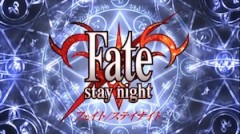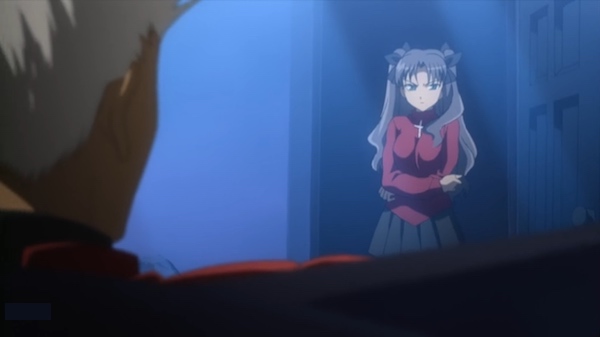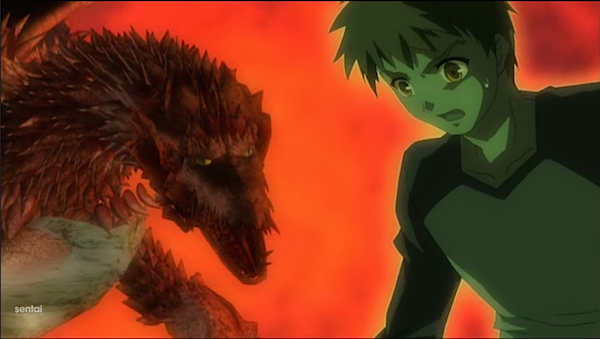
If there is a franchise that is pretty much establishing itself as evergreen in otaku circles, one that seems to have developed the capacity of producing multiple seasons of anime adaptations over many years (other than Ikki-Tousen), it would have to be the Fate series based off the games by Kinoko Nasu and Takashi Takeuchi (the men behind Type-Moon). This, however, is a fairly recent development. A little over ten years ago, while the Fate universe was already quite popular if you looked at fanart, merchandise (especially figures—Saber is probably one of the few characters who could compete with Rei Ayanami in terms of numbers of different figures) and interest level among fans, there had not yet been an anime version made. It wasn’t until the Studio Deen adaptation of 2006 (with a preview hitting in late 2005) came about that the series got its own anime.
 It was not a particularly glorious start to what would eventually become an anime franchise behemoth (the Fate universe is doing so well that the alternate reality spinoff Fate/kaleid liner Prisma Illya has managed to get multiple seasons as well). I’m not sure that Fate/Stay Night TV is quite as bad as many people say (and the new ufotable adaptations are not necessarily as good as the people who fawn over them now think), but it’s not all that good a show either. It bears the marks of a work that was subject to many a compromise.
It was not a particularly glorious start to what would eventually become an anime franchise behemoth (the Fate universe is doing so well that the alternate reality spinoff Fate/kaleid liner Prisma Illya has managed to get multiple seasons as well). I’m not sure that Fate/Stay Night TV is quite as bad as many people say (and the new ufotable adaptations are not necessarily as good as the people who fawn over them now think), but it’s not all that good a show either. It bears the marks of a work that was subject to many a compromise.
The first compromise was in the telling of the story. You have to have been hiding under a rock for the past decade, or been completely uninterested in the series to the point of closing browser windows at the slightest appearance of the Nasuverse, to be wholly unfamiliar with the basic story. In some city in Japan, there was a horrific disaster from which the young boy Shirou Emiya was one of the few survivors. He was saved by the enigmatic Kiritsugu Emiya who adopted and raised Shirou. Kiritsugu, however, was not your average rescuer…he was a mage, a user of magic, and the horrific tragedy that destroyed much of Fuyuki City was tied to an event Kiritsugu was involved in: the Grail War, a battle between mages to take control of the Holy Grail, which has the power to grant its possessor a wish.
Years later, after Kiritsugu’s death, the Grail War erupts again and Shirou is pulled into it (it appears that he, too, has the ability to wield magic, but at a very limited level). Each Mage in the War must summon a Servant, a magical embodiment of the spirit of a heroic historical personage (yet many of them are mythological, so not, strictly speaking, historical) who does the fighting for them. Their real identities are normally a closely guarded secret (as this would reveal their weaknesses to their enemies). The Servant that Shirou manages to call forth is one of the strongest of them all: Saber (the servants are called after their ability class, as if this were a fantasy RPG of some sort).
Yada, yada, yada…eh, go look it up on the various wikis devoted to the Nasuverse or the games or the franchise.

Returning to the point, the 2006 anime series was born of compromise. According to an interview with Nasu, the series was initially intended to be an original story (with a new heroine designed for the show who later would make her debut as the heroine of the recent Fate/Grand Order mobile phone game). But that never happened. Instead, FSN the anime would tell the visual novel’s story mainly according to the first playable storyline (“Fate”), while also including elements of the two other routes within the game (“Unlimited Blade Works,” which would get its own anime adaptations later and “Heaven’s Feel,” for which an anime feature is planned in future). This is not uncommon with game adaptations that have multiple playing routes as the idea is to give the viewing audience a feel for the entire work (allowing the uninitiated to get some sense of the overall story and providing some service to fans of the other routes that are not initially adapted).
Problems set in, however, when it appeared that they hewed a little too closely to the model of a visual novel. Many of those who watched FSN hoping to see amazing battles between powerful “heroes” instead were treated to minute after excruciating minute of some of the most leaden prose exposition known to anime.
And then there was the CG dragon.

Okay, I can’t really fault them for that too much, since obviously they needed to have some method of representing the sex scene that occurred at that point in the game and this was a mainstream show, not an eroanime. And while we all still laugh at it, are Mana Transfer Dolphins any better?
What Fate/Stay Night the 2006 series is most of all was a missed opportunity. Here was a story that made claims to epic status in terms of its themes and actions that may well have met such expectations had an epically good anime adaptation been made. Instead, we have a 24-episode-long sometimes good, sometimes sleep-inducing show. It still can bring a smile or a tear for Saber fanboys certainly. Fans of Rin Tohsaka should be pleased as well. But if you want an action-packed epic with incredibly well choreographed fight scenes…you might want to look elsewhere.
At least the dub didn’t completely suck.



